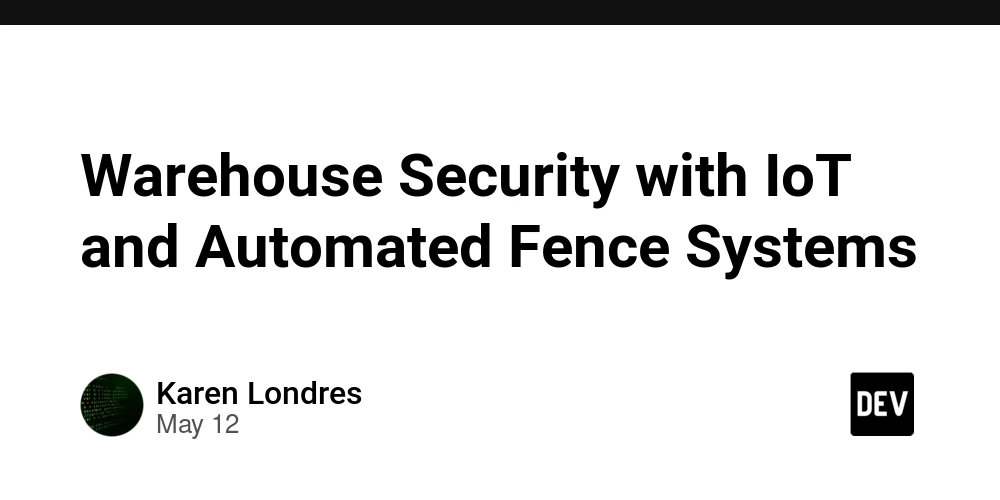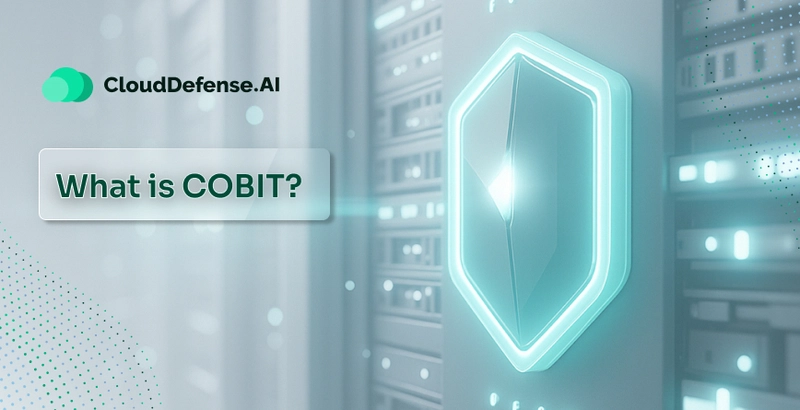Warehouse Security with IoT and Automated Fence Systems
In today's fast-paced logistics and supply chain environments, warehouse security is no longer just about locked doors and on-site guards. With the rise of the Internet of Things (IoT), securing storage spaces and logistics hubs has become more intelligent, responsive, and automated. In this post, we'll explore how IoT technologies and automated fence systems are revolutionizing warehouse security, and why integrating smart sensors, surveillance, and physical barriers is essential in modern infrastructure. The Need for Enhanced Warehouse Security Warehouses are high-value targets for theft, vandalism, and unauthorized access. With growing inventories and around-the-clock operations, ensuring the safety of goods, equipment, and personnel is critical. Traditional security measures are often reactive, relying on surveillance and human intervention. However, IoT-based security solutions are proactive — using real-time data, predictive analytics, and automation to prevent incidents before they happen. How IoT Enhances Warehouse Security IoT enables devices to communicate over a network, providing real-time monitoring and control. Here are key components of an IoT-powered warehouse security system: 1. Smart Surveillance Cameras Smart cameras with motion detection and facial recognition can identify suspicious behavior and send real-time alerts to security personnel or automated systems. import cv2 import numpy as np # Initialize camera cap = cv2.VideoCapture(0) while True: ret, frame = cap.read() gray = cv2.cvtColor(frame, cv2.COLOR_BGR2GRAY) # Simple motion detection motion = np.sum(gray) > 10000000 if motion: print("Motion Detected! Alerting Security System...") cv2.imshow('Security Feed', frame) if cv2.waitKey(1) & 0xFF == ord('q'): break cap.release() cv2.destroyAllWindows() Automatic Gates Chicago IL are often the first point of contact in any warehouse facility. Their integration with smart systems means they can automatically recognize authorized personnel, log entry/exit data, and even adapt to shift schedules. Using automatic gates enhances both convenience and security. 2. Sensor-Enabled Perimeter Fencing IoT sensors can detect fence tampering, climbing, or breach attempts. These sensors can be integrated into metal, vinyl, or wood fences. // Node.js + MQTT example for breach detection sensor const mqtt = require('mqtt') const client = mqtt.connect('mqtt://broker.hivemq.com') client.on('connect', () => { client.subscribe('fence/sensor/breach', () => { console.log('Subscribed to breach topic') }) }) client.on('message', (topic, message) => { if (topic === 'fence/sensor/breach') { console.log('Fence Breach Detected:', message.toString()) // Trigger alarm system } }) 3. Automated Gates Automated gates controlled via smartphone apps or remote systems provide both convenience and control. Integrated with IoT, they can log entries, manage visitor access, and enforce scheduling policies. Open Gate function openGate() { fetch('https://example.com/api/gate/open', { method: 'POST' }) .then(response => response.json()) .then(data => alert('Gate opened: ' + data.status)) } The Role of Automated Fencing in Smart Security Automated fencing systems complement IoT-enabled security networks. They act as the physical frontline and can react dynamically to threats. For example: Fences can lock down upon breach detection. Lights or alarms can be triggered along specific fence segments. Drones can be deployed from fence posts for visual tracking. These smart fencing systems aren't limited to metal or concrete barriers. Different fence materials offer unique advantages, and all can be adapted for IoT integration. chain link fence in Chicago is a popular choice due to its affordability and adaptability. It allows for easy installation of vibration sensors, cameras, and even electrified deterrents. These fences can also be painted or coated to blend into the environment while supporting smart upgrades. Benefits of IoT + Automated Fencing Real-time Monitoring: Immediate response to incidents. Predictive Maintenance: Sensors detect wear or potential issues before failure. Scalability: Easy to extend across multiple sites. Integration with other systems: Alarm, lighting, and surveillance systems. Vinyl Fence Chicago IL options offer durability and a cleaner aesthetic. These are ideal for businesses that want their security to be discreet but effective. Vinyl fences can be embedded with smart RFID sensors, especially near gates or critical junctions. Applications Across Industries Logistics Hubs: For preventing unauthorized access. Construction Sites: Temporary fencing with smart monitoring. Manufacturing Plants: Protect critical infrastructure. Retail Warehouses: Reduce shrinkage and control employee

In today's fast-paced logistics and supply chain environments, warehouse security is no longer just about locked doors and on-site guards. With the rise of the Internet of Things (IoT), securing storage spaces and logistics hubs has become more intelligent, responsive, and automated. In this post, we'll explore how IoT technologies and automated fence systems are revolutionizing warehouse security, and why integrating smart sensors, surveillance, and physical barriers is essential in modern infrastructure.
The Need for Enhanced Warehouse Security
Warehouses are high-value targets for theft, vandalism, and unauthorized access. With growing inventories and around-the-clock operations, ensuring the safety of goods, equipment, and personnel is critical. Traditional security measures are often reactive, relying on surveillance and human intervention. However, IoT-based security solutions are proactive — using real-time data, predictive analytics, and automation to prevent incidents before they happen.
How IoT Enhances Warehouse Security
IoT enables devices to communicate over a network, providing real-time monitoring and control. Here are key components of an IoT-powered warehouse security system:
1. Smart Surveillance Cameras
Smart cameras with motion detection and facial recognition can identify suspicious behavior and send real-time alerts to security personnel or automated systems.
import cv2
import numpy as np
# Initialize camera
cap = cv2.VideoCapture(0)
while True:
ret, frame = cap.read()
gray = cv2.cvtColor(frame, cv2.COLOR_BGR2GRAY)
# Simple motion detection
motion = np.sum(gray) > 10000000
if motion:
print("Motion Detected! Alerting Security System...")
cv2.imshow('Security Feed', frame)
if cv2.waitKey(1) & 0xFF == ord('q'):
break
cap.release()
cv2.destroyAllWindows()
Automatic Gates Chicago IL are often the first point of contact in any warehouse facility. Their integration with smart systems means they can automatically recognize authorized personnel, log entry/exit data, and even adapt to shift schedules. Using automatic gates enhances both convenience and security.
2. Sensor-Enabled Perimeter Fencing
IoT sensors can detect fence tampering, climbing, or breach attempts. These sensors can be integrated into metal, vinyl, or wood fences.
// Node.js + MQTT example for breach detection sensor
const mqtt = require('mqtt')
const client = mqtt.connect('mqtt://broker.hivemq.com')
client.on('connect', () => {
client.subscribe('fence/sensor/breach', () => {
console.log('Subscribed to breach topic')
})
})
client.on('message', (topic, message) => {
if (topic === 'fence/sensor/breach') {
console.log('Fence Breach Detected:', message.toString())
// Trigger alarm system
}
})
3. Automated Gates
Automated gates controlled via smartphone apps or remote systems provide both convenience and control. Integrated with IoT, they can log entries, manage visitor access, and enforce scheduling policies.
onclick="openGate()">Open Gate
The Role of Automated Fencing in Smart Security
Automated fencing systems complement IoT-enabled security networks. They act as the physical frontline and can react dynamically to threats. For example:
- Fences can lock down upon breach detection.
- Lights or alarms can be triggered along specific fence segments.
- Drones can be deployed from fence posts for visual tracking.
These smart fencing systems aren't limited to metal or concrete barriers. Different fence materials offer unique advantages, and all can be adapted for IoT integration.
chain link fence in Chicago is a popular choice due to its affordability and adaptability. It allows for easy installation of vibration sensors, cameras, and even electrified deterrents. These fences can also be painted or coated to blend into the environment while supporting smart upgrades.
Benefits of IoT + Automated Fencing
- Real-time Monitoring: Immediate response to incidents.
- Predictive Maintenance: Sensors detect wear or potential issues before failure.
- Scalability: Easy to extend across multiple sites.
- Integration with other systems: Alarm, lighting, and surveillance systems.
Vinyl Fence Chicago IL options offer durability and a cleaner aesthetic. These are ideal for businesses that want their security to be discreet but effective. Vinyl fences can be embedded with smart RFID sensors, especially near gates or critical junctions.
Applications Across Industries
- Logistics Hubs: For preventing unauthorized access.
- Construction Sites: Temporary fencing with smart monitoring.
- Manufacturing Plants: Protect critical infrastructure.
- Retail Warehouses: Reduce shrinkage and control employee access.
Challenges and Considerations
- Power Supply: Remote fences may require solar or battery backups.
- Connectivity: Choose LoRa, Zigbee, or Wi-Fi based on range and bandwidth needs.
- Data Privacy: Secure data collection and transmission.
- Maintenance: Regular testing and firmware updates are essential.
Wood fence Installation Chicago IL remains a top choice for properties seeking a natural look. Wood fences can still support modern IoT security features like hidden motion detectors and integrated lighting. With proper treatment, these fences are durable and can be upgraded to support wireless sensors.
Final Thoughts
IoT and automated fencing systems are changing how we think about physical security. Warehouses, now more than ever, require flexible, intelligent, and integrated security solutions. Whether it’s a chain link or a vinyl setup, each fence type can be upgraded to become part of a smarter, safer infrastructure.
The integration of IoT into warehouse fencing is not a luxury — it's a necessity. By investing in smart security today, businesses can prevent losses, ensure safety, and maintain operational continuity tomorrow.













































































































































































![[The AI Show Episode 156]: AI Answers - Data Privacy, AI Roadmaps, Regulated Industries, Selling AI to the C-Suite & Change Management](https://www.marketingaiinstitute.com/hubfs/ep%20156%20cover.png)
![[The AI Show Episode 155]: The New Jobs AI Will Create, Amazon CEO: AI Will Cut Jobs, Your Brain on ChatGPT, Possible OpenAI-Microsoft Breakup & Veo 3 IP Issues](https://www.marketingaiinstitute.com/hubfs/ep%20155%20cover.png)




































































































































































































































































_incamerastock_Alamy.jpg?width=1280&auto=webp&quality=80&disable=upscale#)
_Brain_light_Alamy.jpg?width=1280&auto=webp&quality=80&disable=upscale#)






























































































![Senators reintroduce App Store bill to rein in ‘gatekeeper power in the app economy’ [U]](https://i0.wp.com/9to5mac.com/wp-content/uploads/sites/6/2025/06/app-store-senate.jpg?resize=1200%2C628&quality=82&strip=all&ssl=1)























































































